This is an old revision of this page, as edited by 208.68.154.129 (talk) at 19:25, 27 September 2010. The present address (URL) is a permanent link to this revision, which may differ significantly from the current revision.
Revision as of 19:25, 27 September 2010 by 208.68.154.129 (talk)(diff) ← Previous revision | Latest revision (diff) | Newer revision → (diff)Template:♠♣♥♦†₡§¥½₧₦≠±≤₩“„¤m²฿“”
| Republic of ChileRepública de Chile (Spanish) | |
|---|---|
 Flag
Flag
 Coat of arms
Coat of arms
| |
| Motto: Por la razón o la fuerza "By reason or force" Template:Es icon | |
| Anthem: Himno Nacional de Chile Template:Es icon | |
 | |
 Chile Pacific Islands Chile Pacific Islands | |
| Capitaland largest city | Santiago de Chile |
| Official languages | Spanish |
| Demonym(s) | Chilean |
| Government | Unitary presidential republic |
| • President | Sebastián Piñera |
| • Minister of the Interior | Rodrigo Hinzpeter |
| • | September 18, 1810 |
| • Declared | February 12, 1818 |
| • Recognized | April 25, 1844 |
| • Current constitution | September 11, 1980 |
| Area | |
| • Total | 756,950 km (292,260 sq mi) (38th) |
| • Water (%) | 1.07² |
| Population | |
| • April 2010 estimate | 17,063,000 (60th) |
| • 2002 census | 15,116,435 |
| • Density | 22/km (57.0/sq mi) (194th) |
| GDP (PPP) | 2009 estimate |
| • Total | $243.569 billion |
| • Per capita | $14,340 |
| GDP (nominal) | 2009 estimate |
| • Total | $161.781 billion |
| • Per capita | $10,025 |
| Gini (2009) | 52 Error: Invalid Gini value |
| HDI (2007) | Error: Invalid HDI value (44th) |
| Currency | Peso (CLP) |
| Time zone | UTC-4 (CLT) |
| • Summer (DST) | UTC-3 (CLST) |
| Drives on | Right |
| Calling code | +56 |
| ISO 3166 code | CL |
| Internet TLD | .cl |
 The territory in Antarctica claimed by Chile (Pink). It overlaps the Argentine and British Antarctic claims. The territory in Antarctica claimed by Chile (Pink). It overlaps the Argentine and British Antarctic claims. | |
| |

Chile (traditional English pronunciation /ˈtʃɪli/, also Template:Pron-en), officially the Republic of Chile (Template:Lang-es Template:IPA-es), is a country in South America occupying a long, narrow coastal strip between the Andes mountains to the east and the Pacific Ocean to the west. It borders Peru to the north, Bolivia to the northeast, Argentina to the east, and the Drake Passage in the far south. With Ecuador, it is one of two countries in South America which do not border Brazil. The Pacific coastline of Chile is 6,435 kilometres (4000 mi). Chilean territory includes the Pacific islands of Juan Fernández, Salas y Gómez, Desventuradas and Easter Island. Chile also claims about 1,250,000 square kilometres (480,000 sq mi) of Antarctica, although all claims are suspended under the Antarctic Treaty.
The shape of Chile is a distinctive, ribbon of land 4,300 kilometres (2,700 mi) long and on average 175 kilometres (109 mi) wide. Its climate varies, ranging from the world's driest desert- the Atacama- in the north, through a Mediterranean climate in the centre, to a rainy temperate climate in the south. The northern desert contains great mineral wealth, principally copper. The relatively small central area dominates in terms of population and agricultural resources, and is the cultural and political center from which Chile expanded in the late 19th century, when it incorporated its northern and southern regions. Southern Chile is rich in forests and grazing lands and features a string of volcanoes and lakes. The southern coast is a labyrinth of fjords, inlets, canals, twisting peninsulas, and islands.
Prior to arrival of the Spanish in the 16th century, northern Chile was under Inca rule while the indigenous Mapuche inhabited central and southern Chile. Chile declared its independence from Spain on February 12, 1818. In the War of the Pacific (1879–83), Chile defeated Peru and Bolivia and won its current northern territory. It was not until the 1880s that the Mapuche were completely subjugated. Although relatively free of the coups and arbitrary governments that blighted South America, Chile endured a 17-year military dictatorship (1973–1990) that left more than 3,000 people dead or missing.
Today, Chile is one of South America's most stable and prosperous nations. It leads Latin American nations in human development, competitiveness, quality of life, political stability, globalization, economic freedom, low perception of corruption and comparatively low poverty rates. It also ranks high regionally in freedom of the press and democratic development. However, it has a high income inequality, as measured by the Gini index. In May 2010 Chile became the first South American country to join the OECD. Chile is a founding member of both the United Nations and the Union of South American Nations.
Etymology
There are various theories about the origin of the word Chile. According to a theory by 17th century Spanish chronicler Diego de Rosales, the Incas of Peru called the valley of the Aconcagua "Chili" by corruption of the name of a Picunche tribal chief ("cacique") called Tili, who ruled the area at the time of the Incan conquest in the 15th century. Another theory points to the similarity of the valley of the Aconcagua with that of the Casma Valley in Peru, where there was a town and valley named Chili.
Other theories say Chile may derive its name from the native Mapuche word chilli, which may mean "where the land ends," "the deepest point of the Earth," or "sea gulls;" or from the Quechua chin, "cold", or the Aymara tchili, meaning "snow". Another meaning attributed to chilli is the onomatopoeic cheele-cheele-the Mapuche imitation of a bird warble locally known as trile, before common in the central valleys. The Spanish conquistadors heard about this name from the Incas, and the few survivors of Diego de Almagro's first Spanish expedition south from Peru in 1535-36 called themselves the "men of Chilli." Ultimately, Almagro is credited with the universalization of the name Chile, after naming the Mapocho valley as such.
History
Main article: History of ChileAbout 10,000 years ago, migrating Native Americans settled in fertile valleys and coastal areas of what is present-day Chile. Example settlement sites from the very early human habitation are Cueva del Milodon and the Pali Aike Crater's lava tube. The Incas briefly extended their empire into what is now northern Chile, but the Mapuche (or Araucanians as they were known by the Spaniards) successfully resisted many attempts by the Inca Empire to subjugate them, despite their lack of state organization. They fought against the Sapa Inca Tupac Yupanqui and his army. The result of the bloody three-day confrontation known as the Battle of the Maule was that the Inca conquest of the territories of Chile ended at the Maule river.
In 1520, while attempting to circumnavigate the earth, Ferdinand Magellan discovered the southern passage now named after him, the Strait of Magellan. The next Europeans to reach Chile were Diego de Almagro and his band of Spanish conquistadors, who came from Peru in 1535 seeking gold. The Spanish encountered various cultures that supported themselves principally through slash-and-burn agriculture and hunting. The conquest of Chile began in earnest in 1540 and was carried out by Pedro de Valdivia, one of Francisco Pizarro's lieutenants, who founded the city of Santiago on February 12, 1541. Although the Spanish did not find the extensive gold and silver they sought, they recognized the agricultural potential of Chile's central valley, and Chile became part of the Viceroyalty of Peru.


Conquest of the land took place gradually, and the Europeans suffered repeated setbacks at the hands of the local population. A massive Mapuche insurrection that began in 1553 resulted in Valdivia's death and the destruction of many of the colony's principal settlements. Subsequent major insurrections took place in 1598 and in 1655. Each time the Mapuche and other native groups revolted, the southern border of the colony was driven northward. The abolition of slavery by the Spanish crown in 1683 was done in recognition that enslaving the Mapuche intensified resistance rather than cowing them into submission. Despite the royal prohibitions relations remained strained from continual colonialist interference.
Cut off to the north by desert, to the south by the Mapuche, to the east by the Andes Mountains, and to the west by the ocean, Chile became one of the most centralized, homogeneous colonies in Spanish America. Serving as a sort of frontier garrison, the colony found itself with the mission of forestalling encroachment by both the Mapuche and Spain's European enemies, especially the British and the Dutch. In addition to the Mapuche, buccaneers and English adventurers menaced the colony, as was shown by Sir Francis Drake's 1578 raid on Valparaíso, the colony's principal port. Because Chile hosted one of the largest standing armies in the Americas, it was one of the most militarized of the Spanish possessions, as well as a drain on the treasury of the Viceroyalty of Peru. By the end of the colonial period, the population reached an estimated 500,000 (not including unsubjugated Indians); approximately 300,000 of which were mestizos and about 150,000 of which were Criollos (European or European descent).
The first general census was performed by the government of Agustín de Jáuregui between 1777 and 1778. The census indicated that the population consisted of 259,646 inhabitants: 73.5% of European descent, 7.9% mestizos, 8.6% Indians and 9.8% blacks. In 1784, Francisco Hurtado, Governor of the province of Chiloé, conducted a population census and found the population consisted of 26,703 inhabitants, 64.4% of which were whites and 33.5% of which were natives.
Finally, in 1812, the Diocese of Concepción conducted a census of areas south of the Maule river, but did not include the indigenous population (estimated at 8,000 people), or the inhabitants of the province of Chiloé, (and estimated population of 210,567, 86.1% of which were Spanish or of European descent, 10% of which were Indians and 3.7% of which were mestizos, blacks and mulattos.
The usurpation of the Spanish throne by Napoleon's brother Joseph in 1808 precipitated the drive by the colony for independence from Spain. A national junta in the name of Ferdinand - heir to the deposed king - was formed on September 18, 1810. The Government Junta of Chile proclaimed Chile an autonomous republic within the Spanish monarchy (in memory of this day Chile celebrates its National Day on September 18 each year). After this events, and under the command of José Miguel Carrera (one of the most renowned patriots) and his two brothers Juan José and Luis Carrera, a movement for total independence soon gained a wider following. Spanish attempts to re-impose arbitrary rule during what was called the Reconquista led to a prolonged struggle, including infighting from Bernardo O'Higgins, who challenged Carrera's leadership and ignored the commands of the accomplished military leader even after Carrera had spared his life.
Intermittent warfare continued until 1817. With Carrera in prison in Argentina, O'Higgins and anti-Carrera cohort José de San Martín, hero of the Argentine War of Independence, led an army that crossed the Andes into Chile and defeated the royalists. On February 12, 1818, Chile was proclaimed an independent republic. The political revolt brought little social change, however, and 19th century Chilean society preserved the essence of the stratified colonial social structure, which was greatly influenced by family politics and the Roman Catholic Church. A strong presidency eventually emerged, but wealthy landowners remained powerful.
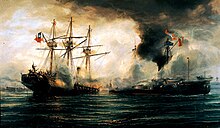
Toward the end of the 19th century, the government in Santiago consolidated its position in the south by ruthlessly suppressing the Mapuche during the Occupation of Araucanía. In 1881, it signed a treaty with Argentina confirming Chilean sovereignty over the Strait of Magellan. As a result of the War of the Pacific with Peru and Bolivia (1879–83), Chile expanded its territory northward by almost one-third, eliminating Bolivia's access to the Pacific, and acquired valuable nitrate deposits, the exploitation of which led to an era of national affluence.
The Chilean Civil War in 1891 brought about a redistribution of power between the President and Congress, and Chile established a parliamentary style democracy. However, the Civil War had also been a contest between those who favored the development of local industries and powerful Chilean banking interests, particularly the House of Edwards who had strong ties to foreign investors.
20th century
The Chilean economy partially degenerated into a system protecting the interests of a ruling oligarchy. By the 1920s, the emerging middle and working classes were powerful enough to elect a reformist president, Arturo Alessandri Palma, whose program was frustrated by a conservative congress. In the 1920s, Marxist groups with strong popular support arose.
A military coup led by General Luis Altamirano in 1924 set off a period of great political instability that lasted until 1932. The longest lasting of the ten governments between those years was that of General Carlos Ibáñez del Campo, who briefly held power in 1925 and then again between 1927 and 1931 in what was a de facto dictatorship, although not really comparable in harshness or corruption to the type of military dictatorship that has often bedeviled the rest of Latin America . By relinquishing power to a democratically elected successor, Ibáñez del Campo retained the respect of a large enough segment of the population to remain a viable politician for more than thirty years, in spite of the vague and shifting nature of his ideology. When constitutional rule was restored in 1932, a strong middle-class party, the Radicals, emerged. It became the key force in coalition governments for the next 20 years. During the period of Radical Party dominance (1932–52), the state increased its role in the economy. In 1952, voters returned Ibáñez del Campo to office for another six years. Jorge Alessandri succeeded Ibáñez del Campo in 1958, bringing Chilean conservatism back into power democratically for another term.
The 1964 presidential election of Christian Democrat Eduardo Frei Montalva by an absolute majority initiated a period of major reform. Under the slogan "Revolution in Liberty", the Frei administration embarked on far-reaching social and economic programs, particularly in education, housing, and agrarian reform, including rural unionization of agricultural workers. By 1967, however, Frei encountered increasing opposition from leftists, who charged that his reforms were inadequate, and from conservatives, who found them excessive. At the end of his term, Frei had not fully achieved his party's ambitious goals.
In the 1970 election, Senator Salvador Allende a physician and member of the Socialist Party of Chile, who headed "Popular Unity", reached a partial majority in a plurality of votes in a three-way contest, followed by candidates Radomiro Tomic for the Christian Democrat Party and Jorge Alessandri for the Conservative Party. Allende was not elected with an absolute majority, receiving fewer than 355 votes. It became a war of classes, motivated by the central government. Allende was a physician and member of the Socialist Party of Chile, who headed the "Popular Unity" (UP or "Unidad Popular") coalition of the Socialist, Communist, Radical, and Social-Democratic Parties, along with dissident Christian Democrats, the Popular Unitary Action Movement (MAPU), and the Independent Popular Action. Despite pressure from the United States government, the Chilean Congress conducted a runoff vote between the leading candidates, Allende and former president Jorge Alessandri and keeping with tradition, chose Allende by a vote of 153 to 35. Frei refused to form an alliance with Alessandri to oppose Allende, on the grounds that the Christian Democrats were a workers party and could not make common cause with the right-wing.
An economic depression that began in 1972 bottomed out in 1975, exacerbated by capital flight, plummeting private investment, and withdrawal of bank deposits in response to Allende's socialist program. Production fell and unemployment rose. Allende adopted measures including price freezes, wage increases, and tax reforms, to increase consumer spending and redistribute income downward. Joint public-private public works projects helped reduce unemployment. Much of the banking sector was nationalized. Many enterprises within the copper, coal, iron, nitrate, and steel industries were expropriated, nationalized, or subjected to state intervention. Industrial output increased sharply and unemployment fell during the Allende administration's first year.
Allende's program included advancement of workers' interests, replacing the judicial system with "socialist legality", nationalization of banks and forcing others to bankruptcy, and strengthening "popular militias" known as MIR. Started under former President Frei, the Popular Unity platform also called for nationalization of Chile's major copper mines in the form of a constitutional amendment. The measure was passed unanimously by Congress. As a result, the Richard Nixon administration organized and inserted secret operatives in Chile, in order to quickly destabilize Allende’s government. In addition, American financial pressure restricted international economic credit to Chile. The economic problems were also exacerbated by Allende's public spending which was financed mostly by printing money and poor credit ratings given by commercial banks. Simultaneously, opposition media, politicians, business guilds and other organizations, helped to accelerate a campaign of domestic political and economical destabilization, some of which was helped by the United States. By early 1973, inflation was out of control. The crippled economy was further battered by prolonged and sometimes simultaneous strikes by physicians, teachers, students, truck owners, copper workers, and the small business class. On 26 May 1973, Chile’s Supreme Court, which was opposed to Allende's government, unanimously denounced the Allende disruption of the legality of the nation. Although illegal under the Chilean constitution, the court supported and strengthened Pinochet's seizure of power.
Finally, a military coup overthrew Allende on September 11, 1973. As the armed forces bombarded the presidential palace of (Palacio de La Moneda), Allende reportedly had committed suicide. A military junta, led by General Augusto Pinochet Ugarte, took over control of the country. The first years of the regime were marked by human rights violations. On October 1973, at least 72 people were murdered by the Caravan of Death. According to the Rettig Report and Valech Commission, at least 2,115 were killed, and at least 27,265 were tortured (including 88 children younger than 12 years old). A new Constitution was approved by a controversial plebiscite on September 11, 1980, and General Pinochet became president of the republic for an 8-year term. After Pinochet obtained rule of the country, several hundred committed Chilean revolutionaries joined the Sandinista army in Nicaragua, guerrilla forces in Argentina or training camps in Cuba, Eastern Europe and Northern Africa.
In the late 1980s, the government gradually permitted greater freedom of assembly, speech, and association, to include trade union and political activity. The government launched market-oriented reforms with Hernán Büchi as Minister of Finance, which have continued ever since and have significantly contributed to reducing poverty levels. Chile moved toward a free market economy that saw an increase in domestic and foreign private investment, although the copper industry and other important mineral resources were not opened for competition. In a plebiscite on October 5, 1988, General Pinochet was denied a second 8-year term as president (56% against 44%). Chileans elected a new president and the majority of members of a two-chamber congress on December 14, 1989. Christian Democrat Patricio Aylwin, the candidate of a coalition of 17 political parties called the Concertación, received an absolute majority of votes (55%). President Aylwin served from 1990 to 1994, in what was considered a transition period.
In December 1993, Christian Democrat Eduardo Frei Ruiz-Tagle, the son of previous president Eduardo Frei Montalva, led the Concertación coalition to victory with an absolute majority of votes (58%).
21st century
See also: 2010 Chile earthquakeFrei Ruiz-Tagle was succeeded in 2000 by Socialist Ricardo Lagos, who won the presidency in an unprecedented runoff election against Joaquín Lavín of the rightist Alliance for Chile. In January 2006, Chileans elected their first female president, Michelle Bachelet Jeria, of the Socialist Party, defeating Sebastián Piñera, of the National Renewal party, extending the Concertación government for another four years. In January 2010, Chileans elected Sebastián Piñera, of the National Renewal party of the centre-right Coalition for Change, as the first rightist President of Chile during the Chilean presidential election of 2009-2010, defeating former President Eduardo Frei Ruiz-Tagle of the Concertación, for a four-year term succeeding Michelle Bachelet.
On February 27, 2010, Chile was struck by an 8.8 MW earthquake, one of the largest ever recorded in the world. As many as 500 people died; hundreds of thousands of buildings were damaged. The earthquake was also followed by multiple aftershocks. Initial damage estimates were in the range of 15-30 billion USD, around 10-15% of Chile real gross domestic product. On March 11, 2010 the U.S. Geological Survey reported that a 6.9-magnitude quake hit Chile south of the capital, Santiago.
Geography
Main article: Geography of Chile
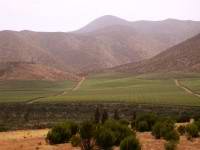


A long and narrow coastal Southern Cone country on the west side of the Andes Mountains, Chile stretches over 4,630 kilometres (2,880 mi) north to south, but only 430 kilometres (265 mi) at its widest point east to west. This encompasses a remarkable variety of landscapes. It contains 756,950 square kilometres (292,260 sq mi) of land area. It is situated within the Pacific Ring of Fire.
The northern Atacama Desert contains great mineral wealth, primarily copper and nitrates. The relatively small Central Valley, which includes Santiago, dominates the country in terms of population and agricultural resources. This area also is the historical center from which Chile expanded in the late 19th century, when it integrated the northern and southern regions. Southern Chile is rich in forests, grazing lands, and features a string of volcanoes and lakes. The southern coast is a labyrinth of fjords, inlets, canals, twisting peninsulas, and islands. The Andes Mountains are located on the eastern border. Chile is the longest north-south country in the world, and also claims 1,250,000 km (480,000 sq mi) of Antarctica as part of its territory. However, this latter claim is suspended under the terms of the Antarctic Treaty, of which Chile is a signatory.
Chile controls Easter Island and Sala y Gómez Island, the easternmost islands of Polynesia, which it incorporated to its territory in 1888, and Robinson Crusoe Island, more than 600 kilometres (370 mi) from the mainland, in the Juan Fernández Islands. Easter Island is today a province of Chile. Also controlled but only temporally inhabited (by some local fishermen) are the small islands of Sala y Gómez, San Ambrosio and San Felix. These islands are notable because they extend Chile's claim to territorial waters out from its coast into the Pacific.
Climate
Main article: Climate of ChileThe climate of Chile comprises a wide range of weather conditions across a large geographic scale, extending across 38 degrees in latitude, making generalisations difficult. According to the Köppen system, Chile within its borders hosts at least seven major climatic subtypes, ranging from desert in the north, to alpine tundra and glaciers in the east and south east, humid subtropical in Easter Island, Oceanic in the south and Mediterranean climate in central Chile. There are four seasons in most of the country: summer (December to February), autumn (March to May), winter (June to August), and spring (September to November).
Flora and Fauna
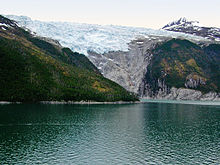
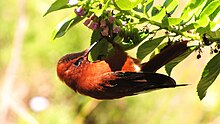
Chile's botanical zones conform to the topographic and climatic regions. The northernmost coastal and central region is largely barren of vegetation, approaching the most closely an absolute desert in the world. On the slopes of the Andes, besides the scattered tola desert brush, grasses are found. The central valley is characterized by several species of cactus, the hard espinos, the Chilean pine, and the Copihue, a red bell-shaped flower that is Chile's national flower.
In southern Chile, south of the Biobío River, the heavy precipitation has produced dense forests of laurels, magnolias, and various species of conifers and beeches, which become smaller and more stunted to the south. The cold temperatures and winds of the extreme south preclude heavy forestation. Grassland is found in Atlantic Chile (in Patagonia). Much of the Chilean flora is distinct from that of neighboring Argentina, indicating that the Andean barrier existed during its formation. Chilean species include the monkey-puzzle tree, part of the pine-like Araucaria genus centered in New Caledonia, and southern beeches.
Chile's geographical isolation also has restricted the immigration of faunal life, so that only a few of the many distinctive Latin American animals are found. Among the larger mammals are the puma or cougar, the llama-like Guanaco, the Andean Wolf, and the fox-like chilla. In the forest region, several types of marsupials and a small deer known as the pudu are found. There are many species of small birds, but most of the larger common Latin American types are absent. Few freshwater fish are native, but North American trout have been successfully introduced into the Andean lakes. Owing to the vicinity of the Humboldt Current, ocean waters abound with fish and other forms of marine life, which in turn support a rich variety of waterfowl, including different penguins. Whales are abundant, and some six species of seals are found in the area.
Time zones
Main article: Time in ChileBecause of the distance between the mainland and Easter Island, Chile uses 4 different UTC offsets:
- The mainland uses UTC-4, and in summer as daylight saving time UTC-3.
- Easter Island uses UTC-6, and in summer as daylight saving time UTC-5.
Economy
Main article: Economy of Chile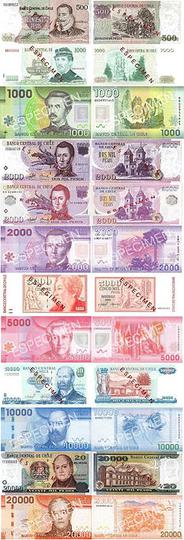

Chile has a dynamic market-oriented economy which is characterized by a high level of foreign trade. During the early 1990s, Chile's reputation as a role model for economic reform was strengthened when the democratic government of Patricio Aylwin - who took over from the military in 1990 - deepened the economic reform initiated by the military government. Growth in real GDP averaged 8% from 1991–1997, but fell to half that level in 1998 because of tight monetary policies (implemented to keep the current account deficit in check) and because of lower export earnings - the latter which was a product of the Asian financial crisis. Chile's economy has since recovered and has seen growth rates of 5-7% over the past several years. In 2006, Chile became the country with the highest nominal GDP per capita in Latin America.
After a decade of impressive growth rates, Chile began to experience a moderate economic downturn in 1999, brought on by unfavorable global economic conditions related to the Asian financial crisis, which began in 1997. The economy remained sluggish until 2003, when it began to show clear signs of recovery, achieving 4.0% real GDP growth. The Chilean economy finished 2004 with growth of 6.0%. Real GDP growth reached 5.7% in 2005 before falling back to 4.0% in 2006. GDP expanded by 5.1% in 2007.
Sound economic policies, maintained consistently since the 1980s, have contributed to steady economic growth in Chile and have more than halved poverty rates. The 1973-90 military government sold many state-owned companies, and the three democratic governments since 1990 have continued privatization, though at a slower pace. The government's role in the economy is mostly limited to regulation, although the state continues to operate copper giant CODELCO and a few other enterprises (there is one state-run bank). Chile is strongly committed to free trade and has welcomed large amounts of foreign investment. Chile has signed free trade agreements (FTAs) with a whole network of countries, including an FTA with the United States that was signed in 2003 and implemented in January 2004.
Over the last several years, Chile has signed FTAs with the European Union, South Korea, New Zealand, Singapore, Brunei, China, and Japan. It reached a partial trade agreement with India in 2005 and began negotiations for a full-fledged FTA with India in 2006. Chile conducted trade negotiations in 2007 with Australia, Malaysia, and Thailand, as well as with China to expand an existing agreement beyond just trade in goods. Chile concluded FTA negotiations with Australia and an expanded agreement with China in 2008. The members of the P4 (Chile, Singapore, New Zealand, and Brunei) also plan to conclude a chapter on finance and investment in 2008. The economic international organization the OECD agreed to invite Chile to be among four countries to open discussions in becoming an official member. It was invited to join the organization in December 2009, and accepted in January 2010.

High domestic savings and investment rates helped propel Chile's economy to average growth rates of 8% during the 1990s. The privatized national pension system (AFP) has encouraged domestic investment and contributed to an estimated total domestic savings rate of approximately 21% of GDP.
Unemployment hovered at 8%-10% after the start of the economic slowdown in 1999, above the 7% average for the 1990s. Unemployment finally dipped to 7.8% in 2006, and continued to fall in 2007, averaging 6.8% monthly (up to August). Wages have risen faster than inflation as a result of higher productivity, boosting national living standards. The percentage of Chileans with household incomes below the poverty line--defined as twice the cost of satisfying a person's minimal nutritional needs—fell from 45.1% in 1987 to 13.7% in 2006, according to government polls. Critics in Chile, however, argue true that poverty figures are considerably higher than those officially published. (The government constructs the poverty line based on an outdated 1987 household consumption poll, instead of more recent polls from 1997 or 2007). According to these critics who use data from the 1997 poll, the poverty rate rises to 29%. Using the relative yardstick favoured in many European countries, 27% of Chileans would be poor, according to Juan Carlos Feres of the ECLAC.
Chile's independent Central Bank pursues an inflation target of between 2% and 4%. Inflation has not exceeded 5% since 1998. Chile registered an inflation rate of 3.2% in 2006. The Chilean peso's rapid appreciation against the U.S. dollar in recent years has helped dampen inflation. Most wage settlements and loans are indexed, reducing inflation's volatility. Under the compulsory private pension system, most formal sector employees pay 10% of their salaries into privately managed funds.

Total foreign direct investment (FDI) was only $3.4 billion in 2006, up 52% from a poor performance in 2005. However, 80% of FDI continues to go to only four sectors: electricity, gas, water and mining. Much of the jump in FDI in 2006 was also the result of acquisitions and mergers, but has done little to create new employment in Chile. The Chilean Government has formed a Council on Innovation and Competition, which is tasked with identifying new sectors and industries to promote. It is hoped that this, combined with some tax reforms to encourage domestic and foreign investment in research and development, will bring in additional FDI to new parts of the economy.
As of 2006, Chile invested only 0.6% of its annual GDP in research and development (R&D). Even then, two-thirds of that was government spending. Beyond its general economic and political stability, the government has also encouraged the use of Chile as an "investment platform" for multinational corporations planning to operate in the region, but this will have limited value given the developing business climate in Chile itself. Chile's approach to foreign direct investment is codified in the country's Foreign Investment Law, which gives foreign investors the same treatment as Chileans. Registration is reported to be simple and transparent, and foreign investors are guaranteed access to the official foreign exchange market to repatriate their profits and capital.
Faced with an international economic downturn the government announced a $4 billion economic stimulus plan to spur employment and growth, and despite the global financial crisis, aiming for an expansion of between 2 percent and 3 percent of GDP for 2009. Nonetheless, economic analysts differ from the government estimates and forecast economic growth at a median of 1.5 percent.
Foreign trade
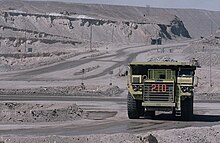
2006 was a record year for Chilean trade. Total trade registered a 31% increase over 2005. During 2006, exports of goods and services totaled US $58 billion, an increase of 41%. This figure was somewhat distorted by the skyrocketing price of copper. In 2006, copper exports reached a historical high of US $33.3 billion. Imports totaled US $35 billion, an increase of 17% compared to the previous year. Chile thus recorded a positive trade balance of US $23 billion in 2006.
The main destinations for Chilean exports were the Americas (US $39 billion), Asia (US $27.8 billion) and Europe (US $22.2 billion). Seen as shares of Chile's export markets, 42% of exports went to the Americas, 30% to Asia and 24% to Europe. Within Chile's diversified network of trade relationships, its most important partner remained the United States. Total trade with the U.S. was US $14.8 billion in 2006. Since the U.S.-Chile Free Trade Agreement went into effect on January 1, 2004, U.S.-Chilean trade has increased by 154%. Internal Government of Chile figures show that even when factoring out inflation and the recent high price of copper, bilateral trade between the U.S. and Chile has grown over 60% since then.
Total trade with Europe also grew in 2006, expanding by 42%. The Netherlands and Italy were Chile's main European trading partners. Total trade with Asia also grew significantly at nearly 31%. Trade with Korea and Japan grew significantly, but China remained Chile's most important trading partner in Asia. Chile's total trade with China reached U.S. $8.8 billion in 2006, representing nearly 66% of the value of its trade relationship with Asia.

The growth of exports in 2006 was mainly caused by a strong increase in sales to the United States, the Netherlands, and Japan. These three markets alone accounted for an additional US $5.5 billion worth of Chilean exports. Chilean exports to the United States totaled US $9.3 billion, representing a 37.7% increase compared to 2005 (US $6.7 billion). Exports to the European Union were US $15.4 billion, a 63.7% increased compared to 2005 (US $9.4 billion). Exports to Asia increased from US $15.2 billion in 2005 to US $19.7 billion in 2006, a 29.9% increase.
During 2006, Chile imported US $26 billion from the Americas, representing 54% of total imports, followed by Asia at 22%, and Europe at 16%. Mercosur members were the main suppliers of imports to Chile at US $9.1 billion, followed by the United States with US $5.5 billion and the European Union with US $5.2 billion. From Asia, China was the most important exporter to Chile, with goods valued at US $3.6 billion. Year-on-year growth in imports was especially strong from a number of countries-Ecuador (123.9%), Thailand (72.1%), Korea (52.6%), and China (36.9%).
Chile's overall trade profile has traditionally been dependent upon copper exports. The state-owned firm CODELCO is the world's largest copper-producing company, with recorded copper reserves of 200 years. Chile has made an effort to expand nontraditional exports. The most important non-mineral exports are forestry and wood products, fresh fruit and processed food, fishmeal and seafood, and wine.
Successive Chilean governments have actively pursued trade-liberalizing agreements. During the 1990s, Chile signed free trade agreements (FTA) with Canada, Mexico, and Central America. Chile also concluded preferential trade agreements with Venezuela, Colombia, and Ecuador. An association agreement with Mercosur-Argentina, Brazil, Paraguay, and Uruguay-went into effect in October 1996. Continuing its export-oriented development strategy, Chile completed landmark free trade agreements in 2002 with the European Union and South Korea. Chile, as a member of the Asia-Pacific Economic Cooperation (APEC) organization, is seeking to boost commercial ties to Asian markets. To that end, it has signed trade agreements in recent years with New Zealand, Singapore, Brunei, India, China, and most recently Japan. In 2007, Chile held trade negotiations with Australia, Thailand, Malaysia, and China. In 2008, Chile hopes to conclude an FTA with Australia, and finalize an expanded agreement (covering trade in services and investment) with China. The P4 (Chile, Singapore, New Zealand, and Brunei) also plan to expand ties through adding a finance and investment chapter to the existing P4 agreement. Chile's trade talks with Malaysia and Thailand are also scheduled to continue in 2008.
After two years of negotiations, the United States and Chile signed an agreement in June 2003 that will lead to completely duty-free bilateral trade within 12 years. The U.S.-Chile FTA entered into force January 1, 2004, following approval by the U.S. and Chilean congresses. The bilateral FTA has inaugurated greatly expanded U.S.-Chilean trade ties, with total bilateral trade jumping by 154% during the FTA's first three years.
Chile unilaterally lowered its across-the-board import tariff for all countries with which it does not have a trade agreement to 6% in 2003. Higher effective tariffs are charged only on imports of wheat, wheat flour, and sugar as a result of a system of import price bands. The price bands were ruled inconsistent with Chile's World Trade Organization (WTO) obligations in 2002, and the government has introduced legislation to modify them. Under the terms of the U.S.-Chile FTA, the price bands will be completely phased out for U.S. imports of wheat, wheat flour, and sugar within 12 years.
Chile is a strong proponent of pressing ahead on negotiations for a Free Trade Area of the Americas (FTAA) and is active in the WTO's Doha round of negotiations, principally through its membership in the G-20 and Cairns Group.
Chile is the first OECD member in South America.
Finance

Chile's financial sector has grown quickly in recent years, with a banking reform law approved in 1997 that broadened the scope of permissible foreign activity for Chilean banks. The Chilean Government implemented a further liberalization of capital markets in 2001, and there is further pending legislation proposing further liberalization. Over the last ten years, Chileans have enjoyed the introduction of new financial tools such as home equity loans, currency futures and options, factoring, leasing, and debit cards. The introduction of these new products has also been accompanied by an increased use of traditional instruments such as loans and credit cards. Chile's private pension system, with assets worth roughly $70 billion at the end of 2006, has been an important source of investment capital for the capital market. However, by 2009, it has been reported that $21 billion had been lost from the pension system to the global financial crisis.
Chile maintains one of the best credit ratings (S&P A+) in Latin America. There are three main ways for Chilean firms to raise funds abroad: bank loans, issuance of bonds, and the selling of stocks on U.S. markets through American Depository Receipts (ADRs). Nearly all of the funds raised through these means go to finance domestic Chilean investment. The government is required by law to run a fiscal surplus of at least 1% of GDP. In 2006, the Government of Chile ran a surplus of $11.3 billion, equal to almost 8% of GDP. The Government of Chile continues to pay down its foreign debt, with public debt only 3.9% of GDP at the end of 2006.
Demographics
Main article: Demographics of Chile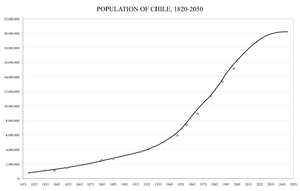
Chile's 2002 census reported a population of 15,116,435 people. Its rate of population growth has been decreasing since 1990, because of a declining birth rate. By 2050 the population is expected to reach approximately 20.2 million people. About 85% of the country's population lives in urban areas, with 40% living in Greater Santiago. The largest agglomerations according to the 2002 census are Greater Santiago with 5.6 million people, Greater Concepción with 861,000 and Greater Valparaíso with 824,000.
Ethnic structure
Studies on the ethnic structure of Chile are inconclusive and might vary significantly from one study to the next.
One study conducted by Francisco Lizcano from UNAM suggested that people of European origin made up 52.7% the population and that Mestizos made up 44% of the population. A study conducted by the University of Chile found that within the Chilean population, 30% are of European descent and Mestizos with partly European ancestry are estimated to be 65% of the population. Other studies have found a white majority that would exceed 60% of the Chilean population.
The European portion of Chile's population consists mainly of people descended from Spanish settlers (predominantly Castilian, Andalusian and Basque), with minorities having German, Italian, Irish, French, British, Swiss, and Croatian ancestry, singly or combined. The Mestizo segment, in this respect, would derive its European component from colonial Spanish settlers (mainly Andalusians and Castilians), while its Amerindian component would be from various tribes or groups, mainly Picunches and Mapuches.
The Afro-Chilean population has always been tiny, reaching a high of 2,500 people during the colonial period; their current percentage of the population is less than one percent. According to the 2002 Census, 4.6% of the Chilean population considered themselves indigenous.
Indigenous communities
Main article: Indigenous peoples in Chile| Those belonging to recognised indigenous communities (2002) | |||||
|---|---|---|---|---|---|
| Alacaluf | 2,622 | 0.02% | Mapuche | 604,349 | 4.00% |
| Atacameño | 21,015 | 0.14% | Quechua | 6,175 | 0.04% |
| Aymara | 48,501 | 0.32% | Rapanui | 4,647 | 0.03% |
| Colla | 3,198 | 0.02% | Yámana | 1,685 | 0.01% |
The 1907 census reported 101,118 Indians, or 3.1% of the total country population. Only those that practiced their native culture or spoke their native language were considered, irrespective of their "racial purity."
According to the 2002 census, only indigenous people that still practiced a native culture or spoke a native language were surveyed, and 4.6% of the population (692,192 people) fit that description. Of that 4.6%, 87.3% declared themselves Mapuche. Most of the indigenous population show varying degrees of mixed ancestry.
Chile is one of the twenty countries to have signed and ratified the only binding international law concerning indigenous peoples, Indigenous and Tribal Peoples Convention, 1989. It was adopted in 1989 as the International Labour Organization (ILO) Convention 169. Chile ratified the convention in 2008. In November 2009, a court decision in Chile, considered to be a landmark ruling in indigenous rights concerns, made use of the ILO convention 169. The Supreme Court decision on Aymara water rights upholds rulings by both the Pozo Almonte tribunal and the Iquique Court of Appeals, and marks the first judicial application of ILO Convention 169 in Chile.
Immigration
Main article: Immigration to Chile

A small, albeit influential, number of non-Spanish immigrants have arrived in Chile from various countries and regions, including Italy, Ireland, France, Greece, Germany, England, the Netherlands, Scotland, Croatia, and the Middle East. The largest contingent of people to arrive in Chile came from Spain and the Basque country, beginning in the 16th century. Estimates of the number of people in Chile who can trace descent from Basques range from 10% (1,600,000) to as high as 27% (4,500,000).
In 1848 an important and substantial German immigration took place, laying the foundation for the German-Chilean community. Sponsored by the Chilean government for the colonization of the southern region, the Germans (including German-speaking Swiss, Silesians, Alsatians and Austrians), strongly influenced the ethnic composition of the southern provinces of Chile. German immigrants have made a cultural impact in many areas of southern Chile, which is a sparsely populated region. The Consulate of Chile in Germany estimates that 500,000 to 600,000 Chileans, or between 3% to 3.5% of the population today, are descended from German immigrants.
It is estimated that nearly five percent of the Chilean population, or about 800,000 people, are of Asian origin, chiefly from the Middle East (these include, most notably, Palestinians, Syrians, Lebanese and Middle Eastern Armenians). Note that Israelis, both Jewish and non-Jewish citizens of the nation of Israel, may be included. Chile is home to a large population of immigrants, mostly Christian, from the Levant. Roughly 500,000 of Chile's population is of full or partial Palestinian origin.

Other historically significant immigrant groups in Chile include Croatians, whose descendants today have been estimated to number some 380,000 people (or about 2.4% of the population). Other authorities estimate that close to 4.6% of the Chilean population may have some Croatian ancestry. Over 700,000 Chileans, or about 4.5% of the national population, may have some English, Scottish, or Welsh ancestry.
Chileans of Greek descent are estimated to number between 90,000 and 120,000 people, placing Chile among the five countries in the world with the most Greek descendants. Most live in or near either Santiago or Antofagasta. Swiss descendants add another 90,000 people to the population. Perhaps five percent of the Chilean population has some French ancestry. Between 600,000 and 800,000 Chileans are descended from Italian immigrants. Other groups of Europeans have followed but are found in smaller numbers, as the descendants of Austrians and Dutchmen it is currently estimated at about 50,000 people. Altogether, these immigrants with their descendants, they have transformed the country culturally, economically and politically.
European emigration to Chile (and to a lesser extent, the arrivals from the Middle East), during the second half of the 19th century and throughout the twentieth, were mostly to Latin America and then to areas like the Atlantic Coast of the Southern Cone.
Descendants of different European ethnic groups often intermarried in Chile, diluting the cultures and separate identities of the home countries and fusing them together with the descendants of the original Basque-Castilian aristocracy of the colonial period, while at the same time preserving some separate aspects. This intermarriage and mixture of cultures and races has help shape the present society and culture of the Chilean middle and upper classes, who now enjoy varied elements of their original European cultures, such as British afternoon tea, German cakes, and Italian pasta. The fusion is also visible in the architecture of Chilean cities. These classes do, however, frequently deprecate Chilean folk culture, an offshoot of the culture of the Spaniards who settled the country in the colonial period.
Chile has recently become a new magnet for immigrants, mostly from neighboring Argentina, Peru, and Bolivia. According to the 2002 national census, Chile's foreign-born population has increased by 75% since 1992. According to an estimate by the Migration and Foreign Residency Department, 317,057 foreigners were living in Chile as of December 2008.
Religion
Main article: Religion in Chile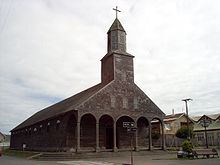
In the most recent census (2002), 70 percent of the population over age 14 identified as Roman Catholic and 15.1 percent as evangelical. In the census, the term "evangelical" referred to all non-Catholic Christian churches with the exception of the Orthodox Church (Greek, Persian, Serbian, Ukrainian, and Armenian), the Church of Jesus Christ of Latter-day Saints (Mormons), Seventh-day Adventists, and Jehovah's Witnesses. Approximately 90 percent of evangelicals are Pentecostal. Wesleyan, Lutheran, Reformed Evangelical, Presbyterian, Anglican, Episcopalian, Baptist, Hindu Temples and Methodist churches are also present. Irreligious people, atheists and agnostics, account for around 8% of the population.
The Constitution provides for freedom of religion, and other laws and policies contribute to the generally free practice of religion. The law at all levels protects this right in full against abuse, either by governmental or private actors.
Church and state are officially separate in Chile. The 1999 law on religion prohibits religious discrimination. However, the Catholic Church enjoys a privileged status and occasionally receives preferential treatment. Government officials attend Catholic events as well as major Protestant and Jewish ceremonies.
The Government observes religious holidays include Christmas, Good Friday, the Feast of the Virgin of Carmen, the Feast of Saints Peter and Paul, the Feast of the Assumption, All Saints' Day, and the Feast of the Immaculate Conception as national holidays. The government has recently declared October 31, Reformation Day, a public national holiday, in honor of the Protestant churches of the country.
Languages
Spanish
Main article: Chilean SpanishThe Spanish spoken in Chile is distinctively accented and quite unlike that of neighbouring South American countries because final syllables and "s" sounds are dropped, and some consonants have a soft pronunciation. Accent varies only very slightly from north to south; more noticeable are the small differences in accent based on social class or whether one lives in the city or the country. That the Chilean population was largely formed in a small section at the center of the country and then migrated in modest numbers to the north and south helps explain this relative lack of differentiation, which was maintained by the national reach of radio, and now television, which also helps to diffuse and homogenize colloquial expressions.
German
German is spoken to a great extent in southern Chile, either in small country side pockets or as a second language among the communities of larger cities.
English
Through initiatives such as the English Opens Doors program, the government made English mandatory for students in fifth-grade and above in public schools. Most private schools in Chile start teaching English from kindergarten. Common English words have been absorbed and appropriated into everyday Spanish speech.
In 2010, all students from 3rd grade in "Enseñanza Media" (secondary school) will be tested on listening and reading comprehension. The evaluation is compulsory and the instrument is TOIEC Bridge, developed by Educational Testing Service.
Indigenous languages
Main article: Languages of ChileThere are several indigenous languages spoken in Chile: Mapudungun, Quechua, Aymara and Rapa Nui. After the Spanish invasion, Spanish took over as the lingua franca and the indigenous languages have become minority languages, with some now extinct or close to extinction.
Largest cities
See also: List of cities in ChileThis list includes conurbations, absorption and cities with over 150,000 inhabitants. Information is from the 2002 census. (Note: The population given is limited to the city area and is not the population in the whole commune.)
| Largest cities or towns in Chile 2002 Census | |||||||||
|---|---|---|---|---|---|---|---|---|---|
| Rank | Name | Region | Pop. | ||||||
 Santiago Metropolis  Greater Valparaíso |
1 | Santiago Metropolis | Santiago Metropolitan Region | 5,428,590 |  Greater Concepción  Greater La Serena | ||||
| 2 | Greater Valparaíso | Valparaíso Region | 803,683 | ||||||
| 3 | Greater Concepción | Biobío Region | 666,381 | ||||||
| 4 | Greater La Serena | Coquimbo Region | 296,253 | ||||||
| 5 | Antofagasta | Antofagasta Region | 285,255 | ||||||
| 6 | Greater Temuco | Araucanía Region | 260,878 | ||||||
| 7 | Rancagua conurbation | O'Higgins Region | 236,363 | ||||||
| 8 | Talca | Maule Region | 191,154 | ||||||
| 9 | Arica | Arica and Parinacota Region | 175,441 | ||||||
| 10 | Chillán conurbation | Ñuble Region | 165,528 | ||||||
Government and politics
Main articles: Politics of Chile, Administrative divisions of Chile, and Law of Chile
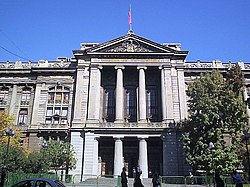
The current Constitution of Chile was approved in a national plebiscite in September 1980, under the military government of Augusto Pinochet. It entered into force in March 1981. After Pinochet's defeat in the 1988 plebiscite, the constitution was amended to ease provisions for future amendments to the Constitution. In September 2005, President Ricardo Lagos signed into law several constitutional amendments passed by Congress. These include eliminating the positions of appointed senators and senators for life, granting the President authority to remove the commanders-in-chief of the armed forces, and reducing the presidential term from six to four years.
Chileans voted in the first round of presidential elections on December 13, 2009. None of the four presidential candidates got more than 50% of the vote. As a result, the top two candidates, center-left Concertación de Partidos por la Democracia coalition's Eduardo Frei Ruiz-Tagle and center-right Coalición por el Cambio coalition's Sebastián Piñera, competed in a run-off election on January 17, 2010, which Sebastián Piñera won. This was Chile's fifth presidential election since the end of the Pinochet era. All five have been judged free and fair. The president is constitutionally barred from serving consecutive terms.
The Congress of Chile has a 38-seat Senate and a 120-member Chamber of Deputies. Senators serve for 8 years with staggered terms, while deputies are elected every 4 years. The current Senate has a 20-18 split in favor of the opposition coalition. The last congressional elections were held on December 13, 2009, concurrently with the presidential election. The current lower house-the Chamber of Deputies-contains 58 members of the governing center-right coalition, 54 from the center-left opposition and 8 from small parties or independents. The Congress is located in the port city of Valparaíso, about 140 kilometres (84 mi) west of the capital, Santiago.
Chile's congressional elections are governed by a binomial system that rewards the two largest representations. Therefore, there are only two senate and two deputy seats apportioned to each electoral district, parties are forced to form wide coalitions and, historically, the two largest coalitions (Concertación and Alianza) split most of the seats in a district. Only if the leading coalition ticket out-polls the second place coalition by a margin of more than 2-to-1 does the winning coalition gain both seats.
In the 2001 congressional elections, the conservative Independent Democratic Union surpassed the Christian Democrats for the first time to become the largest party in the lower house. In the 2005 parliamentary election, both leading parties, the Christian Democrats and the UDI lost representation in favor of their respective allies Socialist Party (which became the biggest party in the Concertación block) and National Renewal in the right-wing alliance. In the last legislative elections in Chile, the Communist Party won 3 out of 120 seats in the Chamber of Deputies for the first time in 30 years.
Chile's judiciary is independent and includes a court of appeal, a system of military courts, a constitutional tribunal, and the Supreme Court of Chile. In June 2005, Chile completed a nation-wide overhaul of its criminal justice system. The reform has replaced inquisitorial proceedings with an adversarial system more similar to that of the United States.
Chile is divided into 15 regions, each headed by an intendant appointed by the president. The regions are further divided into provinces, with provincial governors also appointed by the president. Finally each province is divided into communes which are administered by municipalities, each with its own mayor and council elected for four year terms. Each region is designated by a name and a Roman numeral, assigned from north to south. The only exception is the Santiago Metropolitan Region which is designated RM (Región Metropolitana). Two new regions were created in 2006 and became operative in October 2007; Los Ríos in the south (Region XIV), and Arica y Parinacota in the north (Region XV). The numbering scheme skipped Region XIII.

 |
|
Services
Mail is handled by Correos de Chile, while health care is free, highways are largely privatized, police is handled by the military and fire fighting is operate by unpaid volunteers that solicit public donations for funding while holding other jobs.
Defense
Main article: Military of Chile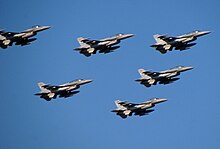

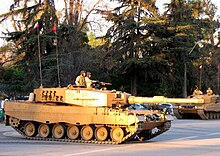
Chile's Armed Forces are subject to civilian control exercised by the president through the Minister of Defense. The president has the authority to remove the commanders-in-chief of the armed forces.
The commander in chief of the Chilean Army is General Juan Miguel Fuente-Alba Poblete. The Chilean Army is 45,000 strong and is organized with an Army headquarters in Santiago, seven divisions throughout its territory, an Air Brigade in Rancagua, and a Special Forces Command in Colina. The Chilean Army is one of the most professional and technologically advanced armies in Latin America.
Admiral Edmundo Gonzalez Robles directs the 21,773-person Chilean Navy, including 2,500 Marines. Of the fleet of 29 surface vessels, only eight are operational major combatants (frigates). Those ships are based in Valparaiso. The Navy operates its own aircraft for transport and patrol; there are no Navy fighter or bomber aircraft. The Navy also operates four submarines based in Talcahuano.
Gen. Ricardo Ortega Perrier heads 12,500 strong Chilean Air Force. Air assets are distributed among five air brigades headquartered in Iquique, Antofagasta, Santiago, Puerto Montt, and Punta Arenas. The Air Force also operates an airbase on King George Island, Antarctica. The Air Force took delivery of the final 2 of 10 F-16s, all purchased from the U.S., in March 2007. Chile also took delivery in 2007 of a number of reconditioned Block 15 F-16s from the Netherlands, bringing to 18 the total of F-16s purchased from the Dutch.
After the military coup in September 1973, the Chilean national police (Carabineros) were incorporated into the Defense Ministry. With the return of democratic government, the police were placed under the operational control of the Interior Ministry but remained under the nominal control of the Defense Ministry. Gen. Eduardo Gordon is the head of the national police force of 40,964 men and women who are responsible for law enforcement, traffic management, narcotics suppression, border control, and counter-terrorism throughout Chile.
Foreign relations
Main article: Foreign relations of Chile
Since the early decades after independence, Chile has always had an active involvement in foreign affairs. In 1837 the country aggressively challenged the dominance of Peru's port of Callao for preeminence in the Pacific trade routes, defeating the short-lived alliance between Peru and Bolivia, the Peru-Bolivian Confederation (1836–39) in the War of the Confederation. The war dissolved the confederation while distributing power in the Pacific. A second international war, the War of the Pacific (1879–83), further increased Chile's regional role, while adding considerably to its territory.
During the 19th century, Chile's commercial ties were primarily with Britain, a country that had a decisive influence on the organization of the navy. The French influenced Chile's legal and educational systems and had a decisive impact on Chile, through the architecture of the capital in the boom years at the turn of the century. German influence came from the organization and training of the army by Prussians.
On June 26, 1945, Chile participated as a founding member of the United Nations being among 50 countries that signed the United Nations Charter in San Francisco, California. With the military coup of 1973, Chile became isolated politically as a result of widespread human rights abuses.
Since its return to democracy in 1990, Chile has been an active participant in the international political arena. Chile completed a 2-year non-permanent position on the UN Security Council in January 2005. Jose Miguel Insulza, a Chilean national, was elected Secretary General of the Organization of American States in May 2005. Chile is currently serving on the International Atomic Energy Agency (IAEA) Board of Governors, and the 2007-2008 chair of the board is Chile's ambassador to the IAEA, Milenko E. Skoknic. The country is an active member of the UN family of agencies and participates in UN peacekeeping activities. It is currently bidding for a seat on the UN Human Rights Council. Chile hosted the Defense Ministerial of the Americas in 2002 and the APEC summit and related meetings in 2004. It also hosted the Community of Democracies ministerial in April 2005 and the Ibero-American Summit in November 2007. An associate member of Mercosur and a full member of APEC, Chile has been an important actor on international economic issues and hemispheric free trade.
The Chilean Government has diplomatic relations with most countries. It settled its territorial disputes with Argentina during the 1990s. Chile and Bolivia severed diplomatic ties in 1978 over Bolivia's desire to reacquire territory it lost to Chile in 1879-83 War of the Pacific. The two countries maintain consular relations and are represented at the Consul General level.
Healthcare
Main articles: Ministry of Health (Chile) and Fondo Nacional de Salud
The Ministry of Health of Chile (Spanish: Ministerio de Salud de Chile), also known as MINSAL, is the cabinet-level administrative office in charge of planning, directing, coordinating, executing, controlling and informing the public health policies formulated by the President of Chile.
Fondo Nacional de Salud also known as FONASA is the funding branch of the Ministry of Health (Chile). The National Health Fund (FONASA), created in 1979 by Decree Law No. 2763, is the financial entity entrusted to collect, manage and distribute state funds for health in Chile. It is funded by the public. Notably, all employees pay 7% of their monthly income to FONASA the funding branch of the Chilean Ministry of Health.
FONASA is part of the NHSS and has executive power through the Ministry of Health (Chile). FONASA headquarters are in Santiago and decentralized public service is conducted by various Regional Offices.
More than 12 million beneficiaries benefit from FONASA. Despite universal health care, beneficiaries can opt for more costly private insurance through ISAPRE. Political questions have been raised due to very wealthy beneficiaries opting for ISAPRE and thus generating healthcare inequity. Such is an example of socioeconomic disparity resulting in the high Gini coefficient in Chile.
| System | Affiliates | % |
|---|---|---|
| FONASA | 12,248,257 | 72.69 |
| ISAPRE | 2,780,396 | 16.50 |
| Total pop. | 16,849,081 | 100.00 |
Culture
Main articles: Culture of Chile, Music of Chile, and Cuisine of Chile
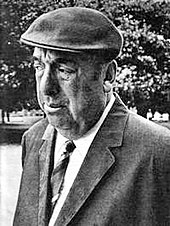
During the period between early agricultural settlements and to the late pre-Hispanic period, northern Chile was a region of Andean culture that was influenced by altiplano traditions spreading to the coastal valleys of the north. While southern regions were areas of Mapuche cultural activities. Through the colonial period following the conquest, and during the early Republican period, the country's culture was dominated by the Spanish. Other European influences, primarily English, French, and German began in the 19th century and have continued to this day. German migrants influenced the Bavarian style rural architecture and cuisine in the south of Chile in cities such as Valdivia, Frutillar, Puerto Varas, Osorno, Temuco, Puerto Octay, Llanquihue, Faja Maisan, Pitrufquén, Victoria, Pucón and Puerto Montt.
Music and dance
Music in Chile ranges from folkloric music, popular music and also to classical music. Its large geography generates different musical expressions in the north, center and south of the country, including also Easter Island and Mapuche music. The national dance is the cueca. Another form of traditional Chilean song, though not a dance, is the tonada. Arising from music imported by the Spanish colonists, it is distinguished from the cueca by an intermediate melodic section and a more prominent melody.
Between 1950 and 1970 appears a rebirth in folk music leading by groups such as Los de Ramon, Los Cuatro Cuartos and Los Huasos Quincheros, among others with composers such as Raul de Ramon, Violeta Parra and others. In the mid-1960s native musical forms were revitalized by the Parra family with the Nueva Canción Chilena, which was associated with political activists and reformers such as Victor Jara,in this period also appeared other important groups like Inti-Illimani. Other important folk singer and researcher on folklore and Chilean ethnography, is Margot Loyola. Also many Chilean Rock bands like La Ley, Los Tres, Los Prisioneros and Kudai have reached international success.
Literature
Chileans call their country país de poetas-country of poets. Gabriela Mistral was the first Chilean to win a Nobel Prize for Literature (1945). Chile's most famous poet, however, is Pablo Neruda, who also won the Nobel Prize for Literature (1971) and is world-renowned for his extensive library of works on romance, nature, and politics. His three highly personalized homes, located in Isla Negra, Santiago and Valparaíso are popular tourist destinations.
Among the list of other Chilean poets are Carlos Pezoa Véliz, Vicente Huidobro, Gonzalo Rojas, and Nicanor Parra. Isabel Allende is the best-selling Chilean novelist, with 51 millions of her novels sold worldwide. Novelist José Donoso's novel 'The Obscene Bird of the Night' is considered by critic Harold Bloom to be one of the canonical works of 20th century Western literature. Another internationally recognized Chilean novelist is Roberto Bolaño whose translations into English have had an excellent reception from the critics.
Cuisine

Chilean cuisine is a reflection of the country's topographical variety, featuring an assortment of seafood, beef, fruits, and vegetables. Traditional recipes include asado, cazuela, empanadas, humitas, pastel de choclo, pastel de papas and curanto.
Sports
Main article: Sport in Chile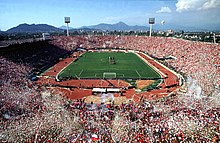
Chile's most popular sport is association football. Chile has appeared in seven FIFA World Cups which includes hosting the 1962 FIFA World Cup where the national football team finished third. Other results achieved by the national football team include four finals at the Copa América, one silver and two bronze medals at the Pan American Games, a bronze medal at the 2000 Summer Olympics and two third places finishes in the FIFA under-17 and under-20 youth tournaments. The main football clubs are Colo-Colo, Universidad de Chile and Universidad Católica. Colo-Colo is the country's most successful football club, having both the most national and international championships, including the coveted Copa Libertadores South American club tournament. Universidad Católica was the last international champion (Interamerican Cup 1994).
Tennis is the country's most successful sport. Its national team won the World Team Cup clay tournament twice (2003 & 2004), and played the Davis Cup final against Italy in 1976. At the 2004 Summer Olympics the country captured gold and bronze in men's singles and gold in men's doubles. Marcelo Ríos became the first Latin American man to reach the number one spot in the ATP singles rankings in 1998. Anita Lizana won the US Open in 1937, becoming the first woman from Latin America to win a grand slam tournament. Luis Ayala was twice a runner-up at the French Open and both Ríos and Fernando González reached the Australian Open men's singles finals.
At the Olympic Games Chile boasts two gold medals (tennis), seven silver medals (athletics, Equestrian, boxing, shooting and tennis) and four bronze medals (tennis, boxing and football). Rodeo is the country's national sport and is practiced in the more rural areas of the country. A sport similar to hockey called chueca was played by the Mapuche people during the Spanish conquest. Skiing and snowboarding are practiced at ski centers located in the Central Andes, and in southern ski centers near to cities as Osorno, Puerto Varas, Temuco and Punta Arenas. While Surfing is popular at some coastal towns. Polo is professionally practiced within Chile and in 2008 Chile achieved top prize in the World Polo Championship a tournament where the country has earned both second and third places medals in previous editions. Basketball is a popular sport in which Chile has earned a bronze medal in the first men's FIBA World Championship held in 1950 and winning a second bronze medal when Chile hosted the 1959 FIBA World Championship. Chile hosted the first FIBA World Championship for Women in 1953 finishing the tournament with the silver medal. Other sports such as marathons and ultramarathons are also increasing in popularity. Chile's San Pedro de Atacama is host to the annual "Atacama Crossing," a six-stage, 250-kilometer footrace which annually attracts about 150 competitors from 35 countries.
Tourism
Main article: Tourism in Chile



Tourism in Chile has experienced sustained growth over the last few decades. In 2005, tourism grew by 13.6%, generating more than 4.5 billion dollars of which 1.5 billion is attributed to foreign tourists. According to the National Service of Tourism (Sernatur), 2 million people a year visit the country. Most of these visitors come from other countries in the American continent, mainly Argentina; followed by a growing number from the United States, Europe, and Brazil with a growing number of Asians from South Korea and PR China.
The main attractions for tourists are places of natural beauty situated in the extreme zones of the country: San Pedro de Atacama, in the north, is very popular with foreign tourists who arrive to admire the Incaic architecture, the altiplano lakes, and the Valley of the Moon. In Putre, also in the North, there is the Chungará Lake, as well as the Parinacota and the Pomerape volcanoes, with altitudes of 6,348 m and 6,282 m, respectively. Throughout the central Andes there are many ski resorts of international repute, like Portillo, Valle Nevado and Termas de Chillán . In the south, the main tourist sites are the coastal area around Tirúa and Cañete with the Isla Mocha and the Nahuelbuta National Park, Chiloé Archipelago and Patagonia, which includes Laguna San Rafael National Park, with its many glaciers, and the Torres del Paine National Park. The central port city of Valparaíso, with its unique architecture, is also popular. Finally, Easter Island in the Pacific Ocean is one of the main Chilean tourist destinations.
For locals, tourism is concentrated mostly in the summer (December to March), and mainly in the coastal beach towns. Arica, Iquique, Antofagasta, La Serena and Coquimbo are the main summer centres in the north, and Pucón on the shores of Lake Villarrica is the main one in the south. Because of its proximity to Santiago, the coast of the Valparaíso Region, with its many beach resorts, receives the largest number of tourists. Viña del Mar, Valparaíso's northern affluent neighbor, is popular because of its beaches, casino, and its annual song festival, the most important musical event in Latin America.
In November 2005, the government launched a campaign under the brand "Chile: All Ways Surprising," intended to promote the country internationally for both business and tourism.
National symbols
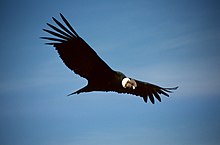

The national flower is the copihue (Lapageria rosea, Chilean bellflower), which grows in the woods of southern Chile.
The coat of arms depicts the two national animals: the condor (Vultur gryphus, a very large bird that lives in the mountains) and the huemul (Hippocamelus bisulcus, an endangered white tail deer). It also has the legend Por la razón o la fuerza (By Reason or by Force).
The flag of Chile consists of two equal horizontal bands of white (top) and red; there is a blue square the same height as the white band at the hoist-side end of the white band; the square bears a white five-pointed star in the center representing a guide to progress and honor; blue symbolizes the sky, white is for the snow-covered Andes, and red stands for the blood spilled to achieve independence. The flag of Chile is similar to the Flag of Texas, although the Chilean flag is 21 years older.
Further reading in English
- Simon Collier and William F. Sater, A History of Chile, 1808–1894, Cambridge University Press, 1996
- Paul W. Drake, et al., Chile: A Country Study, Library of Congress, 1994
- Luis Galdames, A History of Chile, University of North Carolina Press, 1941
- Brian Lovemen, Chile: The Legacy of Hispanic Capitalism, 3rd ed., Oxford University Press, 2001
- John L. Rector, The History of Chile, Greenwood Press, 2003
See also
Main article: List of Chile-related topicsReferences
- "Chilean Government". The Coat of Arms. Retrieved 2009-06-20.
- ^ "Chile". International Monetary Fund. Retrieved 2010-04-21.
- "Inequality in income or expenditure / Gini index]]". Human Development Report. UNDP. 2009.
- http://dictionary.reference.com/browse/Chile
- ^ "Racial Structure". The World Factbook. CIA. Retrieved 2007-11-11.
- ^ "Country profile: Chile". BBC News. 2009-12-16. Retrieved 2009-12-31.
- "Bureau of Western Hemisphere Affairs, Background Note: Chile". United States Department of State. 2008.
{{cite web}}: Unknown parameter|month=ignored (help) - "Human and income poverty: developing countries". UNDP. Retrieved 2008-05-19.
- "Encuesta Casen" (PDF). Mideplan. 2007.
- "Chile's accession to the OECD". OECD.org. 7 May 2010. Retrieved 2010-05-07.
- "Chile.com.La Incógnita Sobre el Origen de la Palabra Chile". Chile.com. 2000-06-15. Retrieved 2009-12-17.
- Encyclopædia Britannica. "Picunche (people) - Britannica Online Encyclopedia". Britannica.com. Retrieved 2009-12-17.
- ^ Encina, Francisco A., and Leopoldo Castedo (1961). Resumen de la Historia de Chile. 4th ed. Santiago. Vol. I. Zig-Zag. p. 44.
{{cite book}}: CS1 maint: multiple names: authors list (link) - ^ Hudson, Rex A., ed. (1995). "Chile: A Country Study". GPO for the Library of Congress. Retrieved 2005-02-27.
{{cite web}}:|author=has generic name (help)CS1 maint: multiple names: authors list (link) - Pearson, Neale J. (2004). "Chile". Grolier Multimedia Encyclopedia. Scholastic Library Publishing. Retrieved 2005-03-02.
- "Chile". Encyclopedia Americana. Grolier Online. 2005. Retrieved 2005-03-02.
- "Chile (república)". Enciclopedia Microsoft Encarta Online. 2005. Retrieved 2005-02-26. Archived 2009-10-31.
- Chile - Google Books. Books.google.com. 2002-12-20. ISBN 9789812348906. Retrieved 2009-12-17.
- ^ "Development and Breakdown of Democracy, 1830-1973". Country Studies. Library of Congress. 1994-03-31.
- "Bárbaros, page 66. David J. Weber". Archive.org. Retrieved 2010-05-16.
- "Chile". Encyclopædia Britannica Online.
- "INE - Censo de 1813. Introducción" (PDF). Retrieved 2010-05-16.
- Fowler, Will (1996). Authoritarianism in Latin America since independence. University of Virginia: Geenwood Press. pp. 30–96. ISBN 0313298432.
- Frazier, Lessie Jo (2007). Salt in the sand. Duke University: Duke University Press. pp. 163–184. ISBN 0822340038.
- Mares, David (2001). The United States and Chile: coming in from the cold. Routledge. p. 145. ISBN 9780415931250.
{{cite book}}: Unknown parameter|coauthors=ignored (|author=suggested) (help) - Trento, Joseph (2005). The Secret history of the CIA. Carroll & Graf Publishers. p. 560. ISBN 9780786715008.
{{cite book}}: Cite has empty unknown parameter:|coauthors=(help) - Politics in Chile: socialism ... - Google Books. Books.google.com. 2007. ISBN 9780813342276. Retrieved 2009-12-17.
- ^ De Vylder, Stefan. Allende’s Chile: The political economy of the rise and fall of the Unidad Popular. Cambridge University Press.
- "Allende wins the elections: first coup attempt". Grace.evergreen.edu. Retrieved 2009-12-17.
- Norman Friedman. The Fifty-year War. p. 367.
- ^ Norman Friedman. The Fifty-year War. p. 368.
- Qureshi, Lubna (2008). Nixon, Kissinger, and Allende. Rowman & Littlefield. pp. 86–97. ISBN 0739126555.
- "Report on CIA Chilean Task Force Activties". Chile and the United States: Declassified Documents relating to the Military Coup, 1970-1976. The National Security Archive: Electronic Briefing Books (George Washington University). Retrieved 11 March 2010.
{{cite web}}: Cite has empty unknown parameter:|coauthors=(help) - ^ "COVERT ACTION IN CHILE 1963-1973 STAFF REPORT OF THE SELECT COMMITTEE TO STUDY GOVERNMENTAL OPERATIONS WITH RESPECT TO INTELLIGENCE ACTIVITIES". Fas.org. Retrieved 2009-12-17.
- "Tightening the Belt". Time Magazine. August 07, 1972.
{{cite news}}: Check date values in:|date=(help) - "Equipo Nizkor - CIA Activities in Chile - September 18, 2000". Derechos.org. Retrieved 2009-12-17.
- "Transition to Democracy in Latin America: The Role of the judiciary" (PDF). Yale University.
- Soto, Óscar. El Último dia de Salvador Allende.
- Ahumada, Eugeno. Chile: La memoria prohibida.
- "Flashback: Caravan of Death". BBC. 2000-07-25. Retrieved 2008-05-02.
- Ministerio del Interior (1999-08-03). "Ministerio del Interior, Programa de Derechos Humanos - ddhh_rettig". Ddhh.gov.cl. Retrieved 2009-12-17.
- ^ "Sintesis Ok" (PDF). Retrieved 2009-12-17.
- Pamela Constable and Arturo Valenzuela (1991). A Nation of Enemies: Chile Under Pinochet, P. 150
- Christian, Shirley (1989-12-16). "Man in the News: Patricio Aylwin; A Moderate Leads Chile". The New York Times. Retrieved 2008-05-02.
- "Chile elects new leader Late president's son wins big".
- "Moderate socialist Lagos wins Chilean presidential election". CNN. January 16, 2000. Retrieved 2008-05-02.
- "Chile elects first woman president". MSNBC. Retrieved 2008-05-02.
- Reel, Monte (2006-03-12). "Bachelet Sworn In As Chile's President". The Washington Post. Retrieved 2008-05-02.
- "US ready to help Chile: Obama". The Australia Times. Retrieved 2010-03-03.
- More Quakes Shake Chile’s Infrastructure, Adam Figman, Contract Magazine, March 1, 2010
- "Magnitude 6.9 - LIBERTADOR O HIGGINS, CHILE". Earthquake.usgs.gov. Retrieved 2010-05-16.
- "Antarctic Treaty: Information about the Antarctic Treaty and how Antarctica is governed". Polar Conservation Organisation. Polar Conservation Organisation. February 1, 2008. Retrieved 11 march 2010.
{{cite web}}: Check date values in:|accessdate=(help); Cite has empty unknown parameter:|coauthors=(help) - Vergara Blanco, Alejandro (1998). Derecho de Aguas (in Spanish). Santiago, Chile: Editorial Juridcia de Chile. ISBN 9561012413.
{{cite book}}: Cite has empty unknown parameter:|coauthors=(help) - ^ "Icarito: Enciclopedia de la flora y fauna de Chile". Icarito.
- ^
Smith-Ramírez, Cecilia (Friday, October 27, 2006). "Distribution patterns of flora and fauna in southern Chilean Coastal rain forests: Integrating Natural History and GIS" (PDF). Biodiversity and Conservation (Volume 16, Number 9 / August, 2007). Springer Netherlands.
{{cite journal}}:|issue=has extra text (help); Check date values in:|date=(help) - http://www.weforum.org/pdf/GCR09/GCR20092010fullrankings.pdf
- Chile GDP - real growth rate
- USA-Chile FTA Final Text
- "Economic Department". Embassy of Chile in the United States of America.
- The Chilean pension system
- "Chilean Central Bank".
- "Casen 2006 en profundidad" (PDF). Libertad y Desarrollo. 2007-06-22. Retrieved 2007-10-22.
- "Una muy necesaria corrección: Hay cuatro millones de pobres en Chile". El Mercurio. 2007-10-14. Retrieved 2007-10-22.
- "Destitute no more". The Economist. 2007-08-16. Retrieved 2007-10-22. (subscription required)
- "Chile finmin says no recession seen in 2009-report". Reuters. 2009-01-10. Retrieved 2009-12-17.
- "Chile ranks fifth globally in wine exports and eighth in production". Santiago Times.
- 33873108 39418658 1 1 1 1 1,00.html
- "An uncertain future". GlobalPost. Retrieved 2009-12-17.
- Chile: Overview of economy
- "Anuario Estadísticas Vitales 2003". Instituto National de Estadísticas.
- "Chile: Proyecciones y Estimaciones de Población. Total País 1950-2050" (PDF). Instituto National de Estadísticas.
- "List of Chilean cities". Observatorio Urbano, Ministerio de Vivienda y Urbanismo de Chile.
- Fernández, Francisco Lizcano (2007). Composición Étnica de las Tres Áreas Culturales del Continente Americano al Comienzo del Siglo XXI. ISBN 9789707570528.
- "5.2.6. Estructura racial". La Universidad de Chile. Retrieved 2007-08-26.
- "Genetic epidemiology of single gene defects in Chile". Ukpmc.ac.uk. Retrieved 2010-05-16.
- Esteva-Fabregat (1988), Book: El mestizaje en lberoamérica "a white majority that exceeds 60% of the Chilean population".
- "Elementos de Salud Pública, section 5.2.6". University of Chile.
- ^ "El gradiente sociogenético chileno y sus implicaciones ético-sociales". Medwave.cl. 2000-06-15. Retrieved 2010-05-16.
- "1907 census". Memoriachilena.cl. Retrieved 2010-05-16.
- "Censo 2002 - Síntesis de Resultados" (PDF). Instituto Nacional de Estadísticas.
- "ILOLEX: submits English query". Ilo.org. 2004-01-09. Retrieved 2010-05-16.
- "Chile's Supreme Court Upholds Indigenous Water Use Rights". The Santiago Times. 2009-11-30. Retrieved 2010-03-02.
- Mikel Soro (1997-12-01). "Diariovasco". Diariovasco. Retrieved 2010-05-16.
- ^ "entrevista al Presidente de la Cámara vasca". Deia.com. 2008-05-22. Retrieved 2010-05-16.
- vascos Ainara Madariaga: Autora del estudio "Imaginarios vascos desde Chile La construcción de imaginarios vascos en Chile durante el siglo XX".
- "Basques au Chili". Euskonews.com. Retrieved 2010-05-16.
- Contacto Interlingüístico e intercultural en el mundo hispano.instituto valenciano de lenguas y culturas. Universitat de València Cita: " Un 20% de la población chilena tiene su origen en el País Vasco".
- Template:Es La población chilena con ascendencia vasca bordea entre el 15% y el 20% del total, por lo que es uno de los países con mayor presencia de emigrantes venidos de Euskadi.
- El 27% de los chilenos son descendientes de emigrantes vascos. De los vacos, oñati y los elorza. Waldo Ayarza Elorza.
- Template:Es Presencia vasca en Chile.
- Template:Es Los colonos
- Template:Es Alemanes en Chile.
- "German Embassy in Chile". Embajadaconsuladoschile.de. Retrieved 2010-05-16.
- ^ Template:Es Arabes de Chile
- Template:Es En Chile viven unas 700.000 personas de origen árabe y de ellas 500.000 son descendientes de emigrantes palestinos que llegaron a comienzos del siglo pasado y que constituyen la comunidad de ese origen más grande fuera del mundo árabe.
- "Chile: Palestinian refugees arrive to warm welcome". Adnkronos.com. 2003-04-07. Retrieved 2010-05-16.
- Template:Es 500,000 descendientes de primera y segunda generación de palestinos en Chile.
- Template:Es Santiago de Chile es un modelo de convivencia palestino-judía.
- "Exiling Palestinians to Chile". Palestinethinktank.com. 2008-05-05. Retrieved 2010-05-16.
- Template:Es Chile tiene la comunidad palestina más grande fuera del mundo árabe, unos 500.000 descendientes.
- Template:Es Diaspora Croata..
- "Splitski osnovnoškolci rođeni u Čileu". Matis.hr. 2009-03-25. Retrieved 2010-05-16.
- "hrvatski". Hrvatski.cl. Retrieved 2010-05-16.
- "Historia de Chile, Británicos y Anglosajones en Chile durante el siglo XIX". Retrieved 2009-04-26.
- Template:Es Embajada de Grecia en Chile.
- Template:Es Griegos de Chile
- "90,000 descendants Swiss in Chile". Schweizergruppe.sv.tc. Retrieved 2010-05-16.
- Template:Es 5% de los chilenos tiene origen frances.
- Hoofdstuk XVI Historisch tussenspel Template:Nl icon
- "Dutch immigration". Cstandt.com. Retrieved 2010-05-16.
- "Holando-bóers al sur de Chile". Members.tripod.com. Retrieved 2010-05-16.
- "Juan Bialet Massé en su informe sobre "El estado de las clases obreras en el interior del país"". Oni.escuelas.edu.ar. Retrieved 2010-05-16.
- "SOCIAL IDENTITY Marta Fierro Social Psychologist". Retrieved 2010-05-16.
- "Etnicidad y ciudadanía en América Latina". Docs.google.com. Retrieved 2010-05-16.
- "Cristián Doña and Amanda Levinson, Chile: Moving Towards a Migration Policy". Migrationinformation.org.
- Landaburu, Juan (2007-06-24). "El debate sobre la inmigración ilegal se extiende a la región". La Nación. Retrieved 31 December 2008.
{{cite web}}: Cite has empty unknown parameter:|coauthors=(help) - "Estimación de Población de Extranjeros en Chile a Diciembre de 2008. Informe Estadístico." Departamento de Extranjería y Migración.
- ^ "Chile". International Religious Freedom Report. United States Department of State. 2008-09-19.
- "Hola, Luther". The Economist. 6 November 2008. Retrieved 17 April 2010. (subscription required)
- Andrea Henríquez (2008-10-31). "BBC Mundo | A fondo | 2007 | En nombre de la fe | Los evangélicos tienen su feriado". BBC News. Retrieved 2009-12-17.
- Oliver Zoellner. "Oliver Zoellner | Generating Samples of Ethnic Minorities in Chile". Research-worldwide.de. Retrieved 2009-12-17.
- "Repeat after me: Hello, my name is". Globalpost.com. Retrieved 2010-05-16.
- "Anglicism in Chilean Spanish". Scielo.cl. 2004-05-04. Retrieved 2010-05-16.
- "Languages of Chile".
- Chile: Ciudades, Pueblos, Aldeas y Caseríos 2005, Instituto Nacional de Estadísticas - June 2005.
- Chile: Ciudades, Pueblos, Aldeas y Caseríos 2005, Instituto Nacional de Estadísticas – June 2005.
- "Chile scraps Pinochet-era system". BBC. 2005-08-16. Retrieved 2009-12-31.
- "President Lagos: We can make a greater effort to make yesterday's and today's trials equally just". Chilean Government.
- "Organigrama". Gobierno de Chile.
- Carabineros de Chile, accessed on May 31, 2008
- "United Nations Member States".
- "United Nations Member States".
- "The San Francisco Conference: Chile Signs United Nations Charter".
- "Valdivia, Chile Living Guide".
- "Chile".
- "Chile".
- "Foreign Relations".
- "Food in Chile".
- "Memoria Chilena". Memoriachilena.cl. Retrieved 2010-05-16.
- "Conjuntos Folkloricos de Chile". Musicapopular.cl. Retrieved 2010-05-16.
- "UN MAPA POR COMPLETAR: LA JOVEN POESIA CHILENA - żPor qué tanta y tan variada poesía?". Uchile.cl. Retrieved 2009-12-17.
- http://www.laht.com/article.asp?ArticleId=346023&CategoryId=13003
- Grossman, Lev (2008-11-10). Time http://www.time.com/time/arts/article/0,8599,1857951,00.html. Retrieved 2010-04-28.
{{cite news}}: Missing or empty|title=(help) - Sarah Kerr (2008-12-18). "The Triumph of Roberto Bolaño | The New York Review of Books". Nybooks.com. Retrieved 2010-05-16.
- Wood, James (2007-04-15). "The Visceral Realist". The New York Times. Retrieved 2010-04-01.
- The South American Table by Maria Baez Kijac
- "Unknown" (PDF).
- "Unknown". ProChile.
External links
- Catalog with information of Chile
- Official Chile website
- Government of Chile
- DescubreChile.cl Tourist information, Maps and Pictures of Chile
- "Chile". The World Factbook (2025 ed.). Central Intelligence Agency.
- Chief of State and Cabinet Members
- Chile at UCB Libraries GovPubs
- Template:Dmoz
 Wikimedia Atlas of Chile
Wikimedia Atlas of Chile- Template:Wikitravel
- Photos from the Feb. 2010 earthquake
- Library of Congress country profile
- Encyclopaedia Britannica, Chile - Country Page
- Disputes between Chile and Argentine
| Chile articles | |||||||||||
|---|---|---|---|---|---|---|---|---|---|---|---|
| History |
|  | |||||||||
| Geography | |||||||||||
| Politics |
| ||||||||||
| Economy | |||||||||||
| Society |
| ||||||||||
| Chilean cities with a population of over 150,000 (2017 census) | |
|---|---|
Template:Link FA Template:Link FA Template:Link FA
Categories: